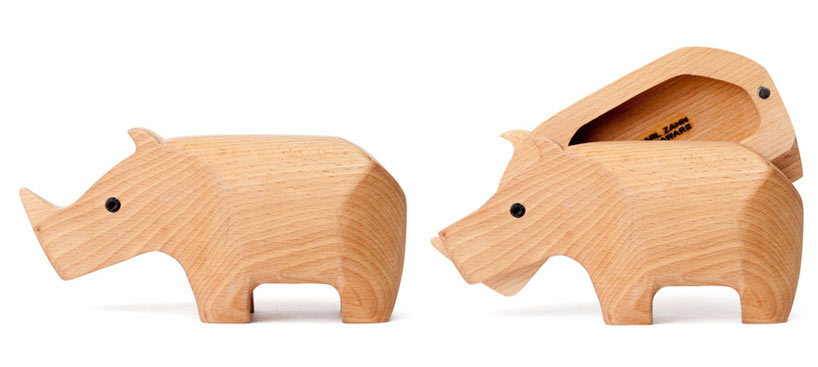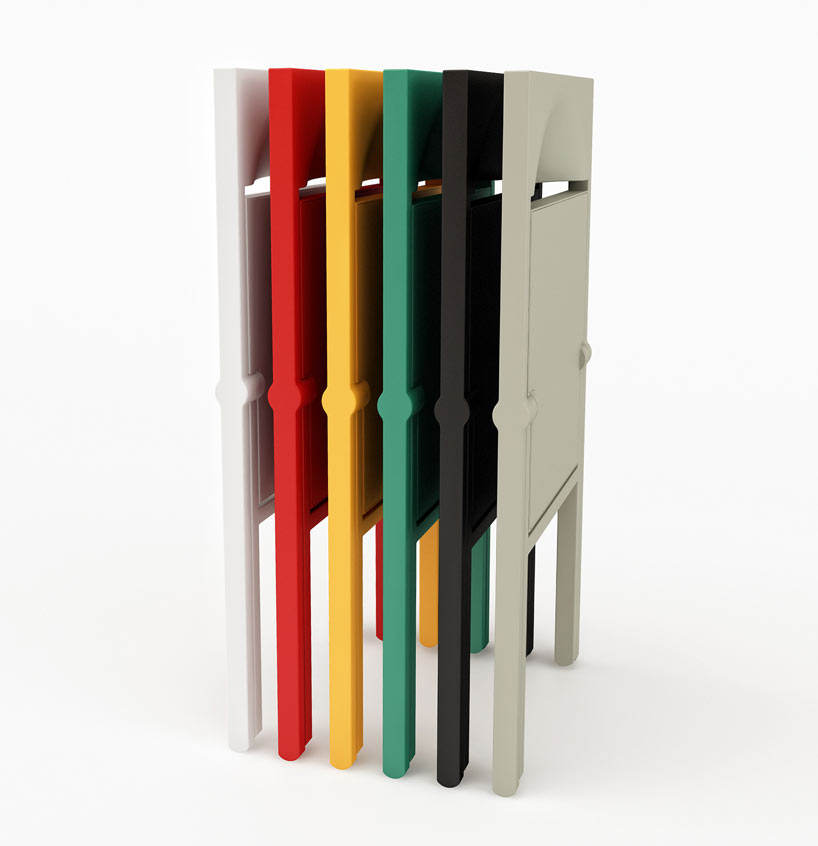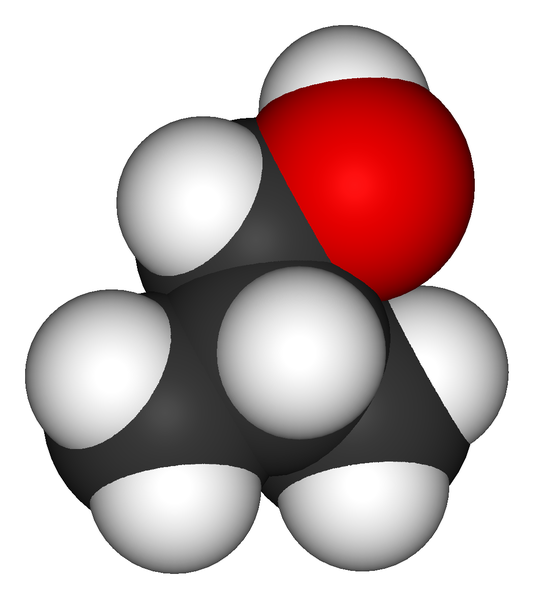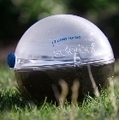Charge your handset by exploiting wind energy
by: The Design blog, 2011-03-07 12:21:03 UTC
Jaazhh:

How can you use wind energy? What if I say you can charge your phone with the wind outside? Yes, you read it right. Making good use of the energy in this electronic dominated world is AERO E designed by Lance Cassidy. No wasting electricity and shelling out extra in the form of electricity bills, as this will convert wind energy to electric energy, which will be further moved to the induction that too without the use of wires.
The whole usage is very easy. All one has to do is place the gadget on a charging pad and see the phone beaming with energy again. It comes with an application which helps you to link with the turbine. Also it will keep a check on the wind direction and charge time.
So, charge your cellphone the green way and show your nature loving side.




Via: Technologyworldinc


 karl zahn: animal boxes
karl zahn: animal boxes
by: Designboom - Weblog, 2011-03-06 08:28:00 UTC

these simple totems act as functional miniature sculptures whereby hinges allow one to swing the components of the animal in two revealing a recessed space in which one can store small important objects within.
read more
david chipperfield: piana for alessi
by: Designboom - Weblog, 2011-03-04 10:04:00 UTC

the chair is produced in a 100% recyclable polypropylene with fiber glass with a non-slip matte finish
utilizing a synchronized opening and closing of the meeting at a single point of rotation.
read more
How an Algae Biofuel Company Ended Up in the Cosmetics Business
by: fast company, 2011-03-07 14:51:20 UTC

Algae has been a hot topic in the clean energy community for years; it can be used to produce biofuel efficiently, with minimal water use, and without taking up arable land. But Solazyme, a San Francisco-based algae fuel startup, is expanding its brand by bringing algae technology into the nutrition and cosmetics industries. This week, the company unveiled Algenist, an anti-aging skincare line that uses microalgae compounds as a main ingredient.
The idea for the Algenist skincare line came from Arthur Grossman, a Stanford University professor and microalgae expert. Soon after the company's inception in 2004, the Solazyme team came to Grossman to find out what applications microalgae might have besides biofuel. His response: skincare, primarily because algae successfully protect themselves against the same harsh environmental conditions as humans.
So Solazyme set to work investigating microalgae, eventually stumbling upon Alguronic Acid, a compound produced by one microalgae species that protects algae--and human skin--from the environment. The compound is, according to Solazyme, significantly more effective than hyaluronic acid (a popular anti-aging skincare ingredient), vitamin C, retinol, vitamin E, and other anti-aging ingredients in increasing skin elastin production, inhibiting melanin production, and protecting against UV-triggered cell damage.
Algenist's products have also been shown in a third-party study to increase skin smoothness, decrease fine lines, and cut down on wrinkles after just a few weeks of use (I've seen the before and after pictures, and they're impressive). Algenist is, in other words, the kind of line that skincare merchants dream of. But Solazyme decided against selling its wares to the L'Oreal's of the world. "It's so different, it has such a unique story, it would have been a shame to sell it to someone," says Frederic Stoeckel, Vice President and General Manager of Algenist.
Instead, Solazyme launched its Algenist division, which has successfully slipped its products into all 800 Sephora stores in the U.S. and Europe (the products go on sale on March 24). Algenist's products, which include a reconstructing serum, moisturizer, and eye balm, will also be sold on QVC beginning on March 25.
The Algenist line is the first series of products to come out of Solazyme, but skincare is only one part of the company's moneymaking strategy. Still, Stoeckel says, it's exciting to see "a biotech brand delivering such efficient results" in the skincare world.
Follow Fast Company on Twitter. Ariel Schwartz can be reached by email.


 Researchers Produce Gasoline-Like Fuel Directly From Switchgrass, Corn Stalks
Researchers Produce Gasoline-Like Fuel Directly From Switchgrass, Corn Stalks
by: fast company, 2011-03-08 00:14:05 UTC

A big breakthrough in the race for better biofuels was announced this week from the U.S. Department of Energy, where the department's BioEnergy
Science Center figured out how to produce isobutanol, a gasoline-like fuel, directly from cellulose (i.e. corn stalks and switchgrass).
A team led by James Liao of the University of California at Los Angeles discovered that a genetically engineered microbe (Clostridium cellulolyticum) can convert cellulose into isobutanol, which is a higher grade of alcohol than ethanol. This marks the first time that cellulose has been converted into the substance.
"Unlike ethanol, isobutanol can be blended at any ratio with gasoline
and should eliminate the need for dedicated infrastructure in tanks or
vehicles," said Liao in a statement. "Plus, it may be possible to use
isobutanol directly in current engines without modification." Isobutanol could, in other words, dilute some of the sticker shock of rising gasoline prices.
There is still a long way before the DOE's technology hits gas stations; the study was just a proof of concept. But the DOE isn't the only organization working on butanol. Scientists at the University of California at Berkeley are using E.Coli to convert sugar into n-butanol. So far, they have managed to squeeze out 15 grams per liter from sugar using the microbe. That research is also in the beginning stages.
Follow Fast Company on Twitter. Ariel Schwartz can be reached by email.


 Design Roundup: Lead-Free Bounce Houses, Lighter Milk
Design Roundup: Lead-Free Bounce Houses, Lighter Milk
by: Chemistry, 2011-03-04 13:00:00 UTC
Read on for news on bounce house makers taking lead out of their products, a new group advancing sustainability in supply chains in Toronto, a lighter milk bottle, and more.
 Iron Nitride Powder Produced as Substitute for Rare Metal
Iron Nitride Powder Produced as Substitute for Rare Metal
by: Tech-On! : tech news - straight from Asia., 2011-03-07 07:38:00 UTC
A Japanese research group succeeded in producing powder of iron nitride by the gram.
EU to miss 2020 efficiency goal and cull CO2 permits
by: Reuters: Green Business News, 2011-03-07 19:15:06 UTC
BRUSSELS (Reuters) - The European Union will fall well short of a target to sharpen its energy efficiency by 2020 on current trends, its executive Commission said on Monday.
 The Jani Is a Biodegradable Sanitary Napkin Made From Invasive Water Hyacinth
The Jani Is a Biodegradable Sanitary Napkin Made From Invasive Water Hyacinth
by: Inhabitat , 2011-03-06 16:00:17 UTC

The water hyacinth grows without bounds in Lake Victoria, Kenya. As an invasive plant with an appetite for environmental and economic destruction, the hyacinth has grown so with vigor, that it has even blocked local fisherman from reaching local waters. Unsure of how to remedy the situation, locals turned to a group of visiting students from the Chalmers University of Technology in Sweden. Understanding the potential of the fibers in the hyacinth, the students found a way to turn lemons into lemonade – or in this case, how to turn the the plants into filaments able to create useful sanitary pads called Janis.
Permalink |
Add to
del.icio.us |
digg
Post tags: eco-fashion, Eco-Friendly Beauty, eco-friendly sanitary napkins, eco-friendly sanitary pads, Ethical Fashion, green fashion, Jani, Sustainable Fashion, sustainable sanitary napkins, sustainable sanitary pads, sustainable style, water hyacinth
Artists Cardamatis and Saad Create Art With Depth From Native Seed Casings
by: Inhabitat , 2011-03-05 16:00:44 UTC

You could say Australian artists Scott Cardamatis and Joseph Saad are like two peas in a pod. Each share a love of nature, and it is this mutual passion that has led them to take a literal approach to landscape art. Instead of picking up a paint brush, they create contemporary eco artworks made simply from a range of native seed casings.







Read the rest of
Artists Cardamatis and Saad Create Art With Depth From Native Seed Casingshttp://www.inhabitat.com/wp-admin/ohttp://www.inhabitat.com/wp-admin/options-general.php?page=better_feedptions-general.php?page=better_feed
Permalink |
Add to
del.icio.us |
digg
Post tags: Cardamatis and Saad, eco design, eco-art, green interiors, native seed art, natural art, sustainable wall art, sustainable wall hangings










Comments by our Users
Be the first to write a comment for this item.